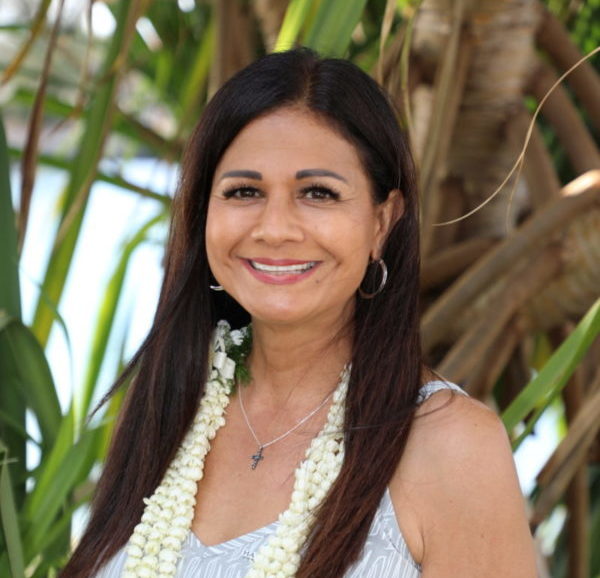
Aloha! I hope everyone is having a wonderful summer and enjoying some well-deserved time doing things you are passionate about with the people you love.
I am so very pleased to share my first Kuʻu Manaʻo (My Thoughts) with you for our triannual Transitions newsletter. In this letter, I want to emphasize something incredibly important to me and Hale Kipa’s mission as a whole – collaboration.
Trusted working relationships with other community-based organizations (CBOs) are crucial for Hale Kipa. There is a Hawaiian saying, “ʻAʻohe hana nui ke alu ʻia,” which means “No task is too big when done together by all.” Hale Kipa’s collaborations with other CBOs, as well as with DHS and CWS, are a powerful example of this philosophy. When we work together, we can strengthen our child welfare services and better take care of our deserving keiki, ʻōpio, and their ʻohana.
Recently, I was fortunate enough to be included in a roundtable discussion at Pacific Business News with four other Oʻahu nonprofit leaders. We discussed some of our collective challenges, including underfunded state contracts. I am grateful to Lisa Maruyama, president and CEO of Hawaiʻi Alliance of Nonprofit Organizations, for bringing us together.
To continue this conversation, I suggested we ally with other community-based organizations (CBOs) so we can communicate together with the state about the hurdles we often face when our contracts aren’t fully funded. If we join and support each other in this endeavor and others, our collective voice is much louder than one of ours is alone.
Some of this work in action includes my representation in Nā Kama a Hāloa, a network of community-based organizations that first came together in 2018 to seek ways to address the overrepresentation of Native Hawaiians in our child welfare system.
Jaque Kelley-Uyeoka and I serve on Mālama ʻOhana Workgroup, a statewide network addressing the disparities and over-representation of Native Hawaiian children and youth in the state’s child welfare system. Co-chaired by myself and Laurie Tochiki, Executive Director of EPIC ʻOhana, this community partnership was created to engage stakeholders – including representatives from DHS, CWS, those who have participated in or work for the CWS system, and Native Hawaiian serving organizations – to recommend transformative changes to the current CWS system.
Hale Kipa also has representation on the state’s Trauma-Informed Care Task Force, with three of our leaders serving on its advisory committee, and collaborates extensively with the Hawaii State Department of Health’s Child & Adolescent Mental Health Division.
A couple of months ago, nine members of our leadership team participated in a service project improving the garden at Hoʻōla Nā Pua’s Pearl Haven facility. We share with Ho‘ōla Nā Pua a similar goal of providing support for youth survivors of commercial sexual exploitation and trafficking, so it was meaningful and rewarding for us to provide support for the organization.
I am committed to ensuring that our actions, our behaviors, and the way we relate to each other speak to the spirit of aloha and laulima. These are not just slogans on a poster in our office. It starts with Hale Kipa continuing to live out these values that require action. When we put forth these efforts, I am confident that others will join us.
When we work together, we bring more ideas and more resources, and we accomplish more. By collaborating, we can create a safety net and fill gaps in services to better support our community’s needs and ensure no child or family falls through the cracks. I believe by joining hands and putting our keiki at the center of our work, we will be able to patch the pukas in our system and build a stronger safety net for all those we serve.
Mahalo for allowing me to share my manaʻo.



